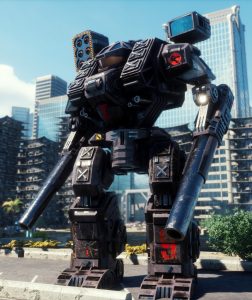Swiftran

| |
| RTC-215M Swiftran | |
| Production information | |
| Manufacturer | Cal-Boeing of Dorwinion[1][2] |
| Production Year | 3053[3] |
| Use | Medevac, Air Cargo Transport |
| Tech Base | Inner Sphere |
| Chassis Type (Size) | VTOL (Medium) |
| Equipment Rating | E/X-X-D |
| Cost | ??? |
| Introduced | 3053 |
| Technical specifications | |
| Mass | 25 tons |
| Speed | 110 km/h |
| Top Speed | 170 km/h |
| Power Plant | ICE |
| Fuel (Type/Range) | Petrochemical/952 km |
| Communications System | Unspecified |
| Targeting Tracking System | Unspecified |
| Armament | None |
| Heat Sinks | None |
| Armor | Heavy Industrial Armor |
| Barrier Armor Rating (BAR) | 10 |
| Crew | 2 (2 enlisted/non-rated)[2] |
Description[edit]
The RTC-215M Swiftran was originally designed as a cargo transport, but it did not come into its own until the Medevac version was produced. Its VTOL design made it ideal for such operations and it was soon accepted into the AFFC in 3053; it quickly became a popular vehicle amongst military paramedic services. Cal-Boeing granted licenses to every Inner Sphere power except the Capellan Confederation to produce the Swiftran.[1][2]
Unfortunately the Swiftran was plagued by technical problems in its early stages; there were problems synchronizing the four engines set on two separate wings for units produced in 3067 prior to June 29.[4] Although this problem was considered fixed it has reoccurred in some of the first production run models years later, leading to at least three fatal accidents. Later production runs have also been affected by mysterious vibrations requiring engine replacement.[1][2]
Equipment and Capabilities[edit]
The aircraft is equipped with six sets of Paramedic Equipment to provide emergency care for six heavily wounded casualties and space for a further ten passengers with lesser wounds as well as ten paramedics.[1][2]


